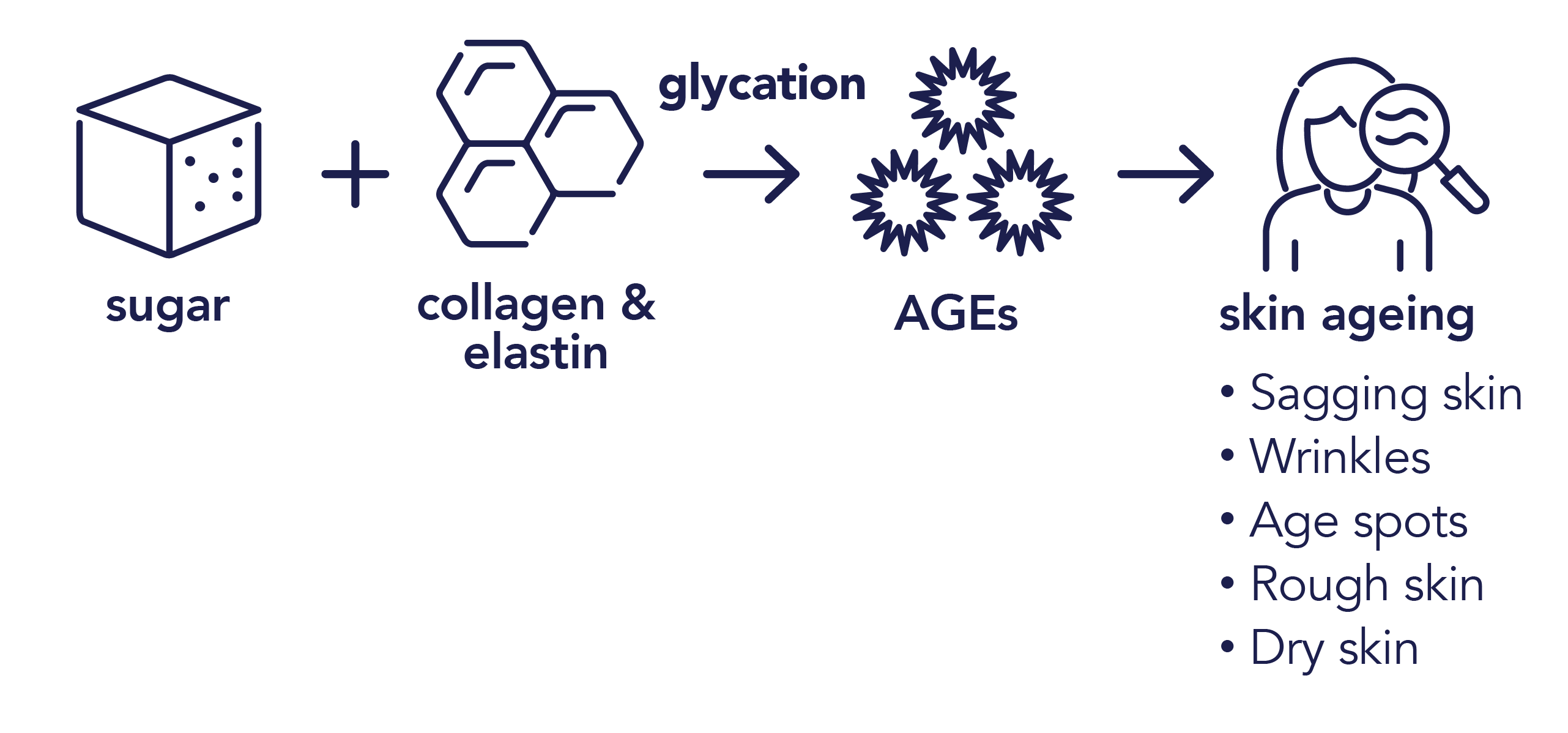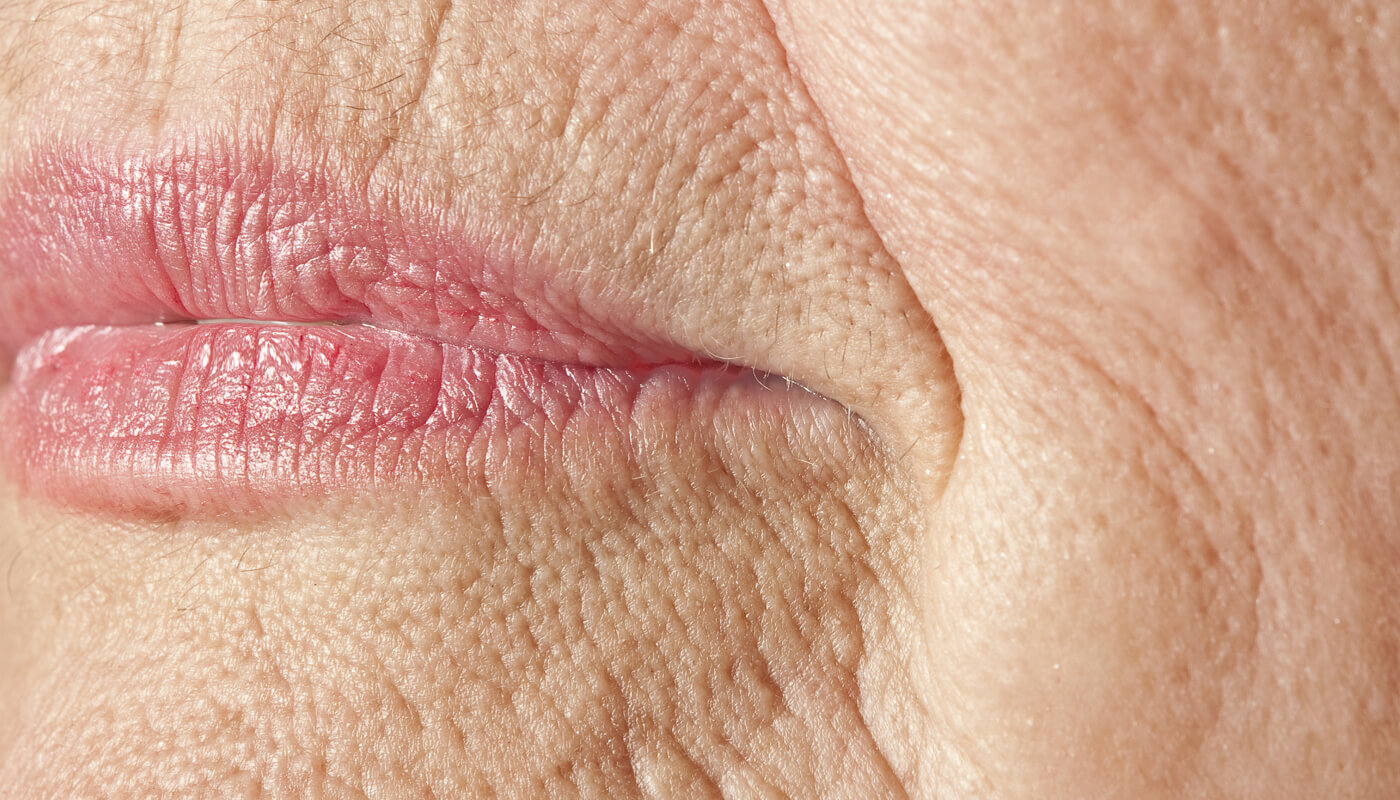The End Of Old Age: Healthy Aging & Turning Back the Clock
Along with balancing and honing our spiritual and mental health and well-being, physical health is also vitally important to sustain us as we journey through these powerful days of enlightenment and planetary ascension. Understanding the essentials of what aging is and how to combat it, naturally, can be invaluable. The key to health is raising your entire baseline of health. Anti-aging discoveries continue to dominate the health and wellness industry nowadays and for good reason; they bring hope that we can live far longer than our ancestors living principally in a balanced lifestyle of good health and wellbeing on all levels.
What Is Aging?
We must first look at aging and what it is. What is aging? What makes us physically age? There are many factors that contribute to old age (free radical damage, hormonal changes, oxidative stress, etc.), but of all of the things that make us "old," two things stand out because until now, they have been so untouchable:
1) The Hayflick Limit
2) The Glycation of Proteins
1) The Hayflick Limit: Cell Life Span
 |
| Animation of the structure of a section of DNA. The bases lie horizontally between the two spiraling strands. Nitrogen: blue, oxygen: red, carbon: green, hydrogen: white, phosphorus: orange. Source: Wikipedia |
The Hayflick Limit or Hayflick phenomenon is named after the American anatomist, Leonard Hayflick, who discovered it almost 40 years ago. A quick description is that all cells have only a limited capacity to continue to divide through the course of our lives until cell death or their senescence phase.
Those numbers are different for each type of cell in our body, and by early adulthood, half of those divisions have been used up. By mid-life, maybe only 20-39% of those divisions are left. At that point, old age starts taking over - then death.
This limited capacity of a cell to perpetuate itself is called the Hayflick Limit. In effect, the Hayflick Limit determines life span at the cellular level. With each division, a cell becomes less likely to divide again, until finally it stops dividing altogether and becomes what we call senescent.
Cell senescence is the final step before cell death. Senescent cells are still alive and metabolically active, but they're no longer capable of dividing. More importantly, though, senescent cells exhibit all of the characteristics that so bother us about old age, such as the difference between the supple skin of a child and the wrinkled skin of the elderly.
How do Cells Age?
As cells approach the Hayflick Limit, they divide less frequently and become aberrant. They take on wildly irregular forms. They no longer line up in parallel arrays; they assume a granular appearance, and deviate from their normal size and shape. This distorted appearance, called the senescent phenotype, is accompanied by a state of declining functionality that was thought to be irreversible.
2) The Glycation of Proteins: Sugar & Aging
 Glycation is the uncontrolled reaction of sugars with proteins. It's kind of like what happens to sugars when you heat them and they caramelize. In effect, glycation is what happens when excess sugars caramelize the proteins in your body. It's a major factor in the aging process - and it's particularly devastating to diabetics.
Glycation is the uncontrolled reaction of sugars with proteins. It's kind of like what happens to sugars when you heat them and they caramelize. In effect, glycation is what happens when excess sugars caramelize the proteins in your body. It's a major factor in the aging process - and it's particularly devastating to diabetics.
 Your body is mostly made up of proteins. In fact, proteins are the substances most responsible for the daily functioning of your body. That's why anything that causes protein deterioration has such a dramatic impact on the body's function and appearance.
Your body is mostly made up of proteins. In fact, proteins are the substances most responsible for the daily functioning of your body. That's why anything that causes protein deterioration has such a dramatic impact on the body's function and appearance.
Thanks largely to the destructive effect of sugar and aldehydes, the protein in our bodies tends to undergo destructive changes as we age.
This destruction is a prime factor, not only in the aging process itself, but also in the familiar signs of aging such as wrinkling skin, cataracts, and the destruction of our nervous system - particularly our brains.
Aging organisms also lose the ability to activate autophagy as strongly as they could when younger. One consequence of this is the accumulation of lipofuscin (age spots, liver spots), the known as the toxic waste of aging. Advanced Glycosylation End-products or AGEs for short.
Good News and Exactly How We Can Reverse Aging Now
As it turns out, not only can we reverse the aging process at the cellular level now, and actually do it quite simply AND QUICKLY - but we can also reverse aging at the system level and the organ level. And for that matter, we can reverse it in terms of how we look and feel - and by that I mean our skin and hair and energy levels. And then, of course, we can even reverse it in terms of lifespan.
What's the Secret?
The Super Three: There are three main components that when combined on a daily basis can reverse engineer the aging clock in our bodies. When combined, these three supplements will increase life expectancy, reverse cell life and the process:
1) L-Carnosine
L-Carnosine is a naturally occurring combination of two amino acids, alanine and histadine, that was discovered in Russia in the early 1900s. Because much of the research was done in Russia, it has been largely unavailable in the United States until recently. Now, though, there have been a number of studies and experiments in other parts of the world verifying everything done in Russia - and more.
Most notably, there were a series of astonishing experiments done in Australia that proved that carnosine rejuvenates cells as they approach senescence. Cells cultured with carnosine lived longer and retained their youthful appearance and growth patterns.
What's probably the most exciting result of the studies is that it was discovered that carnosine can actually REVERSE the signs of aging in senescent cells.
The Reversal of Aging
When the scientists transferred senescent cells to a culture medium containing carnosine, those cells exhibited a rejuvenated appearance and often an enhanced capacity to divide. When they transferred the cells back to a medium lacking carnosine, the signs of senescence quickly reappeared.
As they switched the cells back and forth several times between the culture media, they consistently observed that the carnosine medium restored the juvenile cell phenotype WITHIN DAYS, whereas the standard culture medium brought back the senescent cell phenotype.
Increase Cell Life
In addition, the carnosine medium increased cell life span -- even for old cells . When the researchers took old cells that had already gone through 55 divisions and transferred them to the carnosine medium, they survived up to 70 divisions, compared to only 57 to 61 divisions for the cells that were not transferred.
This represents an increase in the number of cell divisions for each cell of almost 25%.
But in terms of cell life, the increase was an astounding 300%. The cells transferred to the carnosine medium attained a life span of 413 days, compared to just 126 to 139 days for the control cells.
Increase Life Expectancy
This is mind-boggling. But so far, all we've talked about are cells. What does carnosine mean for actual life expectancy?
A new Russian study on mice has shown that mice given carnosine are twice as likely to reach their maximum lifespan as untreated mice . The carnosine also significantly reduced the outward "signs of old age."
In effect, it made the mice look younger. 44% of the carnosine treated mice had young, glossy coats in old age as opposed to only 5% in the untreated mice. This represents 900% better odds of looking young in old age.
Feel Young Again
Another important difference between the treated and the untreated mice was in their behavior. Only 9% of the untreated mice behaved youthfully in old age, versus 58% of the carnosine treated mice. That's a 600% improvement in how they felt.
Strong Antioxidant
Quite simply, carnosine is one of the most powerful antioxidants known. It's a great heavy-metal scavenger. It's a powerful auto-regulator. And it stands alone when it comes to preventing and reversing protein glycation or cross-linking.
Auto-Regulator
Carnosine has the remarkable ability to throttle down bodily processes that are in a state of excess, and to ramp up those that are under expressed.
For example, carnosine thins the blood of people whose blood tends to clot too much and increases the clotting tendency in those with a low clotting index.
Another example is that carnosine suppresses excess immune responses in those who have "hyper" immune systems, whereas it stimulates the immune response in those with weakened immune systems - such as the aged.
And carnosine even seems to have the ability to normalize brain wave functions.
Protein Modification for Longevity
Carnosine is effective against glycation of proteins in association with aging such as wrinkling skin, cataracts, the destruction of our nervous system - particularly our brains. Studies show that carnosine is effective against all forms of protein modification.
Aging is associated with damage to cellular proteins. But carnosine protects cellular proteins from damage in at least two ways.
- Carnosine bonds with the carbonyl (or aldehyde) groups that if left alone will attack and bind with proteins.
- Carnosine works as an antioxidant to prevent "AGEs" the formation of oxidized sugars. A sort of carmelization. The less AGEs, in your body, the younger you are.
Both of these processes have important implications for anti-aging therapy. The key is that carnosine not only prevents damaging cross-links from forming, it eliminates cross-links that have previously formed in proteins, thus restoring normal membrane function.
Alzheimer's & Beta Amyloid Protein
Carnosine has been proven to reduce or completely prevent cell damage caused by beta amyloid, one of the prime protein risk factors for Alzheimers. The presence of beta amyloid leads to damage of the nerves and arteries of the brain. Carnosine blocks and inactivates beta amyloid. In effect, it protects neural tissues against dementia. The key is that carnosine not only prevents damaging cross-links from forming in proteins, it eliminates cross-links that have previously formed in those proteins, thus restoring normal membrane function in cells. This is true not only in the brain, but in all the organs of our body - our skin included. Keep in mind that the damage you see in the skin is not just a cosmetic question. That damage is absolutely an indicator of the kinds of damage happening to every other organ in your body - including your eyes and your brain.
The Reversal of Age
Carnosine levels in our body directly correlate with both the length and quality of our lives. And since carnosine levels decline with age, supplementation with carnosine represents one of the most powerful things you can do to hold back the ravages of old age.
Results
While it is true that many people who supplement with carnosine are going to notice everything from younger looking skin to more energy, the bottom line is that you really shouldn't look for any short term benefits from carnosine supplementation. If any short-term benefits are noticed, you should consider them an added bonus.
The reason you want to supplement with carnosine is for the long term, not for the short-term benefits that you may or may not notice. You supplement with carnosine to protect against the long-term ravages of aging.
Using Carnosine
Some experts recommend using only 50-100 mg of carnosine a day. Others say that if you don't take 1,000-1,500 mg a day it won't work because your body metabolizes the first 500 mg or so.
The key here is that all of these experts are ignoring the simple fact, that different people need different amounts. For example:
- The older you get, the more you need
- If you eat a mostly vegetarian diet, you need more
- If you're diabetic, or just have trouble with blood sugar, you need more
- Most people will do best on 500-750 mg a day
- If you're young and healthy and include meat in your diet, then 250 mg a day makes sense
- As you get older, and if you're starting to show signs of aging or glycation (such as cataracts), then you'd want to think of increasing the dosage up to 1,000 mg a day - maybe even as high as 1,500 mg a day
Safety
In studies, carnosine has been proven safe in amounts as high as 70, 80, or even 100 grams a day, although a small number of people have noticed some minor muscle twitching at doses as small as 1,000 mg. The bottom line is use what you need, and you won't have any problems - only benefits.
Importance
Once you actually understand what carnosine does - once you understand the role it plays in preventing and potentially reversing all of the signs of old age in the body (and we're talking about everything from wrinkled skin to cataracts to Alzheimer's) - heck, once you understand the role it plays in extending life itself - then you're left with the unmistakable conclusion that supplementing with carnosine may represent one of the single best things you can do to help "turn back your biological clock."
2) DMAE - A Missing Link
As important as Carnosine is, there is a "gap" in its usefulness. It's called lipofuscin. Lipofuscin is the age pigment commonly found in aging brains and in other tissue such as the skin. By itself, it is not dangerous. It is merely a byproduct of harmful reactions that have already taken place. For example, one of the byproducts of free radical damage and protein/aldehyde damage (both conditions that carnosine addresses) is lipofuscin.
When you supplement with carnosine, however, something different happens. The carnosine quickly binds with the aldehydes, preventing them from damaging the proteins. The byproduct of this reaction is lipofuscin. So once again you have inactive lipofuscin compounds, but this time as the result of PREVENTING protein damage. In a sense, with carnosine you trade protein damage for lipofuscin.
By itself, lipofuscin is not harmful. However, if enough of it accumulates over time (and this process is accelerated when you supplement with carnosine), it can interfere with proper cellular and organ functions. So the bottom line is that however it is produced (as a result of protein damage, or as the result of taking sacrificial carnosine to prevent protein damage), you want to get rid of it.
What is DMAE?
By any definition, DMAE is the perfect companion to carnosine in an anti-aging formulation. First, it reinforces carnosine's own anti-aging properties. Then, it provides a whole series of complementary benefits of its own.
DMAE is short for (dimethylaminoethanol), a naturally-occurring nutrient that enhances acetylcholine (ACh) synthesis. Adequate levels of ACh are important for proper memory function. Normally found in small amounts in our brains, DMAE has been shown to remarkably enhance brain function when used as a supplement in clinical studies.
DMAE Reinforces Carnosine
One of the prime actions of DMAE is that it flushes accumulated lipofuscin from your body - from the neurons in your brain, from your skin, and from all other organs. It also complements carnosine in that DMAE on its own has been shown to inhibit and reverse the Cross-Linking of proteins and extend lifespan.
Many people have heard of the anti-aging results that Romanian scientist, Ana Aslan, achieved using something called GH3, or procaine. What most people do not know is that GH3 breaks down in the body to form DMAE (after first metabolizing into DEAE) and PABA. In other words, DMAE is the key active component in Ana Aslan's anti-aging formula.
DMAE Benefits
- Increase Acetylcholine levels and RNA levels in the brain
- Stimulate mental activity
- Increase attention span
- Increase alertness
- Increase intelligence (especially in children)
- Improve learning and memory
- Increase energy levels
- Provide a mild, safe tonic effect
- Stimulate the central nervous system
- Relieve anxiety
- Elevate mood in general
- Alleviate behavioral problems and hyperactivity associated with Attention Deficit Disorder
- Increase motivation and reduce apathy in persons suffering from depression
- Induce sounder sleep
- Over time reduce the amount of sleep required by about 1 hour per night
- Intensify dreams tremendously. (Even more so when you take it along with a large dose of phosphatidyl choline -- a key component of lecithin)
- Cause dreams to become more lucid
- Increase willpower
- Decrease the incidence and severity of hangovers in people who consume excessive amounts of Alcohol
DMAE Is Safe
Clinical studies of DMAE have used up to 1,600 mg per day with no reports of side effects. Use caution: In some cases, some people may experience slight headaches, muscle tension, or insomnia if they take too much too soon.
These effects are easily eliminated if intake is reduced and then gradually increased. Although there is no direct connection, many manufacturers recommend that women who are pregnant or breast-feeding, anyone who suffers from convulsions, epilepsy, or seizure disorders, and people with manic-depressive illness should avoid using DMAE.
3) Acetyl-L-Carnitine (ALC)
Like DMAE, Acetyl-L-Carnitine (ALC) is a perfect complement to L-Carnosine.
BENEFITS OF ALC IN FLUSHING TOXINS:
- Acetyl-L-Carnitine (ALC) helps flush lipofuscin from the body -- especially from the brain. Although your body can synthesize L-Carnitine in the liver, it depends on outside sources (meat being a primary source) to fulfill its requirements. This can present a problem for vegetarians since L-Carnitine performs several key functions in the human body. For one, it can improve the functioning of the immune system by enhancing the ability of macrophages to function as phagocytes. And it can improve the functioning of muscle tissue. In fact, it has been shown to increase running speed when given prior to exercise. It also plays a major factor in cellular energy production by shuttling fatty acids from the main cell body into the mitochondria (the cell's energy factories) so that the fats can be oxidized for energy. Without carnitine, fatty acids cannot easily enter the mitochondria.
There is, however, a specialized form of L-carnitine known as acetyl-L-carnitine (ALC) that is often deficient even in meat eaters and that performs virtually all of the same functions - but better. For example, in terms of cellular energy production, in addition to shuttling fatty acids into cell mitochondria, ALC provides acetyl groups from which Acetyl-Coenzyme A (a key metabolic intermediate) can be regenerated, thereby facilitating the transport of metabolic energy and boosting mitochondrial activity.
BENEFITS OF ALC IN BRAIN FUNCTION:
The addition of the acetyl group makes ALC water soluble, which enables it not only to diffuse easily across the inner wall of the mitochondria but also to cross all cell membranes more easily. In other words, ALC reaches parts of the body where L-carnitine cannot go. ALC readily crosses the blood/brain barrier, where it provides a number of specialized neurological functions. For example, it can:
- Acetyl-L-Carnitine (ALC) helps flush lipofuscin from the body -- especially from the brain
- Facilitate both the release and synthesis of acetylcholine, a key brain biochemical
- Increase the brain's levels of choline acetylase
- Enhance the release of dopamine and improve the binding of dopamine to dopamine receptors
- Protect the neurons of the optic nerve and the occipital cortex of the brain
- Innhibitsthe deterioration in mental function associated with Alzheimer's disease and slow its progression. Part of this is a result of its ability to shield neurons from the toxicity of beta amyloid protein. As a result, in Alzheimer's patients, ALC does the following:
- Improves alertness
- Improves attention span
- Increases short term memory
BENEFITS OF ALC ON PARKINSON'S DISEASE:
Through its action on dopamine (a chemical messenger used between nerve cells) and dopamine receptors, ALC seems to play a major role in preventing and/or minimizing the symptoms of Parkinson's disease.
- Enhances the release of dopamine from dopaminergic neurons and improves the binding of dopamine to dopamine receptors
- Retards the decline in the number of dopamine receptors that occurs as part of the normal aging process and (more rapidly) with the onset of Parkinson's disease. In fact, many researchers believe that Parkinson's may be caused by a deficiency of dopamine.
And ALC inhibits tremors - May even play a role in helping with MS
- Inhibits (and possibly reverses) the degeneration of myelin sheaths
- But most of all, ALC just helps slow down the aging process of the brain
- ALC retards the inevitable decline in the number of glucocorticoid teceptors that occurs with aging
- It retards the age-related deterioration of the hippocampus
- It retards the inevitable decline in the number of nerve growth factor receptors that occurs as we age
- It stimulates and maintains the growth of new neurons within the brain (both independently of Nerve Growth Factor (NGF) and as a result of preserving NGF) and helps to prevent the death of existing neurons.
- ALC protects the NMDA receptors in the brain from age-related decline
- ALC inhibits the excessive release of adrenalin in response to stress and inhibits the depletion of luteinising hormone releasing hormone and testosterone that occurs as a result of excessive stress
- Enhances the function of cytochrome oxidase, an essential enzyme of the Electron Transport System
BENEFITS OF ALC AS A MILD MOOD ENHANCEMENT:
The mind boosting effect of acetyl-L-carnitine is often noticed within a few hours -- or even within an hour -- of supplementing. Most people report feeling mentally sharper, having more focus, and being more alert.
- Improves learning ability along with both short term and long term memory
- Improves mood by 53%
- Improves the quality of and reduces the need for sleep
- Improves verbal fluency
- Improves hand eye coordination by some 300-400%
The Longevity Bottom Line
Based on everything we know, supplementing with a combination of L-carnosine, DMAE, and acetyl-L-carnitine is one of the simplest, most effective, and safest steps we can take to help turn back the clock and optimize our health.
To Your Health and Longivity!
Deidre Madsen
These statements have not been evaluated by the Food and Drug Administration. This product is not intended to diagnose, treat, cure, or prevent any disease.
Sources include: THE BARRON REPORT Volume 10 Issue 2 © 2005, Jon Barron. All Rights Reserved.
Tags: anti-aging Hayflick Limit Cell life span senescence glycation of proteins dmae l-carnosine acetyl-l-carnitine dimethylalminoethanol autophagy lipofuscin age spots liver spots














